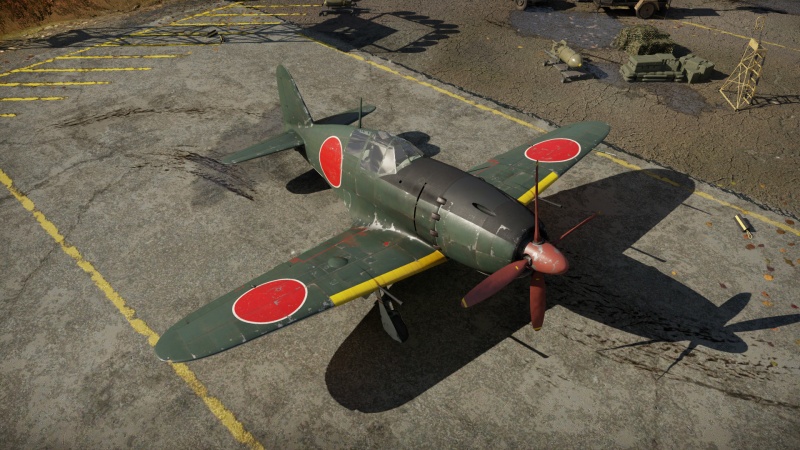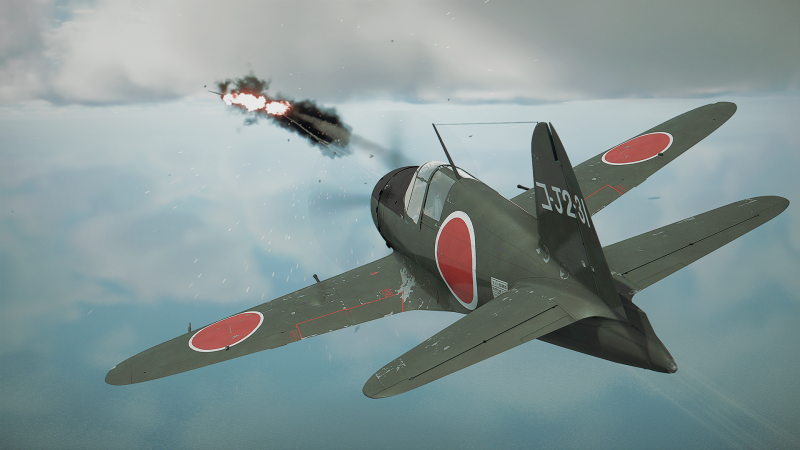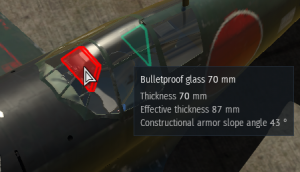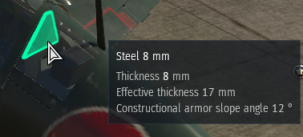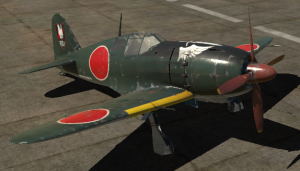Difference between revisions of "J2M2"
(→Pros and cons) |
m |
||
| Line 155: | Line 155: | ||
* Small size | * Small size | ||
* Excellent dive characteristic, able to BnZ | * Excellent dive characteristic, able to BnZ | ||
| − | * Great energy/speed retentions in turns | + | * Great energy / speed retentions in turns |
* More ammo for the 20 mm than the early Zero models | * More ammo for the 20 mm than the early Zero models | ||
| − | |||
* 20 mm does a lot of HE damage | * 20 mm does a lot of HE damage | ||
* Has armour and self-sealing fuel tanks | * Has armour and self-sealing fuel tanks | ||
| − | |||
| − | |||
'''Cons:''' | '''Cons:''' | ||
* Requires proper knowledge of the game to use its advantage | * Requires proper knowledge of the game to use its advantage | ||
| − | * Mediocre | + | * Mediocre Top speed compared to its adversaries it will face |
| − | * Airframe compresses at speeds above 700 | + | * Airframe compresses at speeds above 700 km/h |
| − | * 7.7 mm machine guns are quite ineffective at | + | * 7.7 mm machine guns are quite ineffective at their battle rating, lowering your combat capability once cannon ammo runs out |
== History == | == History == | ||
Revision as of 20:44, 7 October 2023
| This page is about the Japanese fighter J2M2. For other versions, see J2M (Family). |
Contents
Description
The J2M2 Model 11, designated as Raiden Mod.11 (雷電一一型), was the first production model of the J2M 'Raiden' family. It was developed as a land-based defense interceptor to protect Japanese Navy bases from (high-altitude) bombers. The Navy requested this project in 1939, but only Mitsubishi responded and assigned Jiro Horikoshi and his team to work on it after the A6M production was secured. The first prototypes of the J2M were built in 1942, but it faced several technical issues, such as excessive engine vibrations and unreliable landing gear, which delayed its development and production. The Navy had high expectations for the J2M, considering it a potential replacement for the A6M, but due to its troubled development and production, the Raiden was only used as a stop-gap interceptor with limited success until the more promising N1K-J 'Shiden' was available.
It was introduced in Update 1.49 "Weapons of Victory". Equipped with 2 machine guns and 2 cannons, the Raiden will primarily rely on its heavy-hitting cannon armament as it should be primarily used in Boom-N-Zoom tactics due to its excellent climb rate and diving speeds. It has average manoeuvrability at low-medium speeds but will be severely limited once it reaches its high diving speeds.
- Nicknames
- Official Designation: 雷電 (Raiden, "Lightning Bolt")
- Allied reporting name: Jack
General info
Flight performance
The J2M2 Raiden is an interceptor that excels in the Boom & Zoom play style. Once off the ground, the aircraft becomes an absolute monster, with a ludicrous climb rate, exceeding 20 meters per second, or close to 4,000 feet per minute of climb. This climb rate can be used to gain altitude and height over the enemy, and when they engage your slower, but much more manoeuvrable comrades flying Zeros, you swoop in and attack, which can be finished with quick bursts of the wing-mounted 20 mm cannons. Although half of your belt is next to useless when stock, a solid burst with upgraded belts has a good chance to critically damage, if not outright down, an enemy aircraft. The ammo load of 200 rounds is not large but provides enough to keep you fighting if one does not spray too much.
If one is unable to down an enemy quickly enough, the good energy retention in the vertical allows the craft to zoom back up to altitude for another attack. The aircraft does have some deficiencies, however. Its turning circle is closer to that of a P-51 or Fw-190, and in a sustained turn fight, it will lose energy and become a sitting duck. Compression becomes an issue at high speeds, and although faster than the majority of Japanese fighter aircraft, it still struggles to catch faster opponents, such as P-51s or P-47s. This can be countered by climbing at a high angle when in pursuit and then using that accumulated energy to close the gap and open fire.
The aircraft shares the same characteristics as the future J2M3 and M5 and can be a demo of what is there to come in the Japanese tree.
| Characteristics | Max Speed (km/h at 5,500 m) |
Max altitude (metres) |
Turn time (seconds) |
Rate of climb (metres/second) |
Take-off run (metres) | |||
|---|---|---|---|---|---|---|---|---|
| AB | RB | AB | RB | AB | RB | |||
| Stock | 569 | 551 | 11500 | 19.7 | 20.4 | 16 | 16 | 300 |
| Upgraded | 626 | 596 | 18.8 | 19.0 | 28.3 | 21.2 | ||
Details
| Features | ||||
|---|---|---|---|---|
| Combat flaps | Take-off flaps | Landing flaps | Air brakes | Arrestor gear |
| ✓ | ✓ | ✓ | X | X |
| Limits | ||||||
|---|---|---|---|---|---|---|
| Wings (km/h) | Gear (km/h) | Flaps (km/h) | Max Static G | |||
| Combat | Take-off | Landing | + | - | ||
| 0 | 350 | 488 | 454 | 280 | ~13 | ~10 |
| Optimal velocities (km/h) | |||
|---|---|---|---|
| Ailerons | Rudder | Elevators | Radiator |
| < 430 | < 460 | < 400 | > 324 |
Survivability and armour
Unlike other Japanese fighters, the J2M2 has some decent armour. There is a 70 mm bulletproof glass plate in front of the pilot. There is also a tiny triangular section of steel that is 8 mm behind the pilots head. Another thing the J2M2 has that other Japanese planes don't have near rank 3, is self-sealing fuel tanks. There is however no armour around the engine so the engine is very prone to bullets striking and damaging it.
Modifications and economy
Armaments
Offensive armament
The J2M2 is armed with:
- 2 x 20 mm Type 99 Model 2 cannons, wing-mounted (100 rpg = 200 total)
- 2 x 7.7 mm Type 97 navy machine guns, nose-mounted (550 rpg = 1,100 total)
The two 7.7 mm machine guns are mounted in the cowling of the aircraft serve as good backups if the cannons run dry, or if there is a need to poke a fleeing enemy into a manoeuvre, lest they are felled by a thousand strings of rifle fire.
Suspended armament
The J2M2 can be outfitted with the following ordnance:
- Without load
- 2 x 60 kg Navy Type 97 Number 6 bombs (120 kg total)
The two 60 kg bombs are enough to destroy light pillboxes in a pinch, or if your bombing skills are exceptional, you can use these bombs for precise targeting against tanks in ground RB, although the J2M2's lacklustre turn rate will be exacerbated by the low manoeuvring required in the game mode.
Usage in battles
In the start of a match, you'll want to use your best advantage, climbing. The J2M2 has an incredible rate of climb for its BR. This will almost always guarantee you an altitude advantage, and from there, you should pick out your targets one-by-one. The J2M2 does not have the best offensive guns so make sure to never head-on. If you are diving on an opponent and they are trying to head-on, break off and do a spiral climb. Your opponent (if he's greedy enough) will stay on you and lose all of his energy. Once you see him about to go into a stall, quickly dive down to him and shoot him down. Another advantage of the J2M2 is the top speed. The J2M2 can go very fast for its BR and you should use it to your advantage. One way you can use this is by doing Boom n' Zooms, but make sure to watch your speed. You don't want to go too fast to where you'll start to "lock-up" and have almost no authority of the controls.
Manual Engine Control
| MEC elements | ||||||
|---|---|---|---|---|---|---|
| Mixer | Pitch | Radiator | Supercharger | Turbocharger | ||
| Oil | Water | Type | ||||
| Controllable | Controllable Not auto controlled |
Controllable Not auto controlled |
Controllable Not auto controlled |
Separate | Controllable 2 gears |
Not controllable |
Pros and cons
Pros:
- Excellent climb rate
- Easily outperforms other allied aircraft it usually faces
- Outturns most allied planes except for the Spitfire
- Small size
- Excellent dive characteristic, able to BnZ
- Great energy / speed retentions in turns
- More ammo for the 20 mm than the early Zero models
- 20 mm does a lot of HE damage
- Has armour and self-sealing fuel tanks
Cons:
- Requires proper knowledge of the game to use its advantage
- Mediocre Top speed compared to its adversaries it will face
- Airframe compresses at speeds above 700 km/h
- 7.7 mm machine guns are quite ineffective at their battle rating, lowering your combat capability once cannon ammo runs out
History
Development
During the China Incident (Sino-Japanese war) the Navy had sustained some damage from Chinese bomber groups as they didn't have any dedicated interceptors at the time, for this reason the Navy put out multiple specifications for planes to deal with threats which the Chinese made clear to the Navy. For bombers specifically they specified for a strictly local-defense interceptor known as the 14-Shi Interceptor.
The designer behind the A6M, Jiro Horikoshi and his team started development on this specification. But due the harsh unrealistic specifications for mainly engine output required for the team to use a strong engine which wasn't available yet and with the oversized engine required for the task resulted in a sleek but stubby plane.
After the initial J2M1 prototypes outfitted with the 1,044 kW Mitsubishi MK4C Kasei 13 14-cylinder air-cooled radial engine and didn't come near the specification requirements, engine vibrations coming from the cooling system and a troublesome undercarriage design held it back from being used as a production model.
The J2M2 Model 11 was outfitted with 1,379 kW Mitsubishi MK4R-A Kasei 23a 14-cylinder radial engine which somewhat overcame the teething problems but still didn't reach the requirements, overburdened with engine problems and electrical malfunctions in the landing gear remained.
Mitsubishi wanted to make the best of it and get out the J2Ms into combat service before it was officially adopted in the Navy. Engine problems and performance were only further resolved in further modifications.
Combat History
The first few produced J2M2s were delivered to the development units in December 1942 but the troublesome amount of engine problems still held it back from mass production. Troubleshooting almost took a year and the first batch of the serial built J2M2 Model 11 could be delivered to 381st Kōkūtai in December of 1943.
Furthermore, the J2M2 saw limited action in the Philippines, although it was largely ineffective due to the limited initial production batch and design flaws.
Media
- Skins
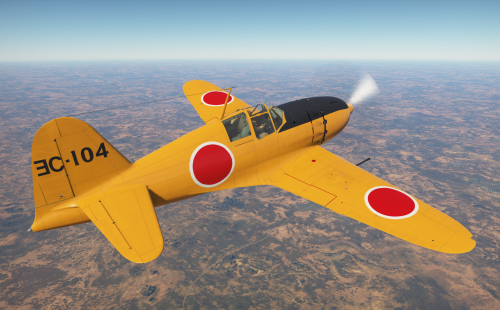
- Images
- Videos
See also
Links to the articles on the War Thunder Wiki that you think will be useful for the reader, for example:
- reference to the series of the aircraft;
- links to approximate analogues of other nations and research trees.
External links
| Mitsubishi Company (三菱商会) | |
|---|---|
| Fighters | A5M4 · Hagiri's A5M4 |
| A6M2 mod. 11 · A6M2 · A6M3 · A6M3 mod. 22 · A6M3 mod. 22Ko · A6M5 · A6M5 Ko · A6M5 otsu · A6M5 Hei · A6M6c | |
| A7M1 (NK9H) · A7M2 | |
| J2M2 · J2M3 · J2M4 Kai · J2M5 · J2M5 (30 mm) | |
| Hydroplanes | F1M2 |
| Interceptors | Ki-83 · Ki-109 |
| Bombers | G4M1 |
| Ki-21-Ia · Ki-21-I hei · Ki-67-I Ko · Ki-67-I otsu | |
| Jet Fighters | Ki-200 |
| Captured | ▃A6M2 · ␗A6M2 |
| See also | Mitsubishi Heavy Industries, Ltd. (Post-War) |
| Japan fighters | |
|---|---|
| Navy | |
| Carrier-based fighter | |
| A5M | A5M4 · Hagiri's A5M4 |
| A6M | A6M2 mod. 11 · A6M2 · A6M3 · A6M3 mod. 22 · A6M3 mod. 22Ko · A6M5 · A6M5 Ko · A6M5 otsu · A6M5 Hei · A6M6c |
| A7He | A7He1* |
| A7M | A7M1 (NK9H) · A7M2 |
| Land-based Fighter | |
| J2M | J2M2 · J2M3 · J2M4 Kai · J2M5 · J2M5 (30 mm) |
| J6K | J6K1 |
| J7W | J7W1 |
| N1K-J | N1K1-Ja · N1K2-J · N1K2-Ja |
| Fighter seaplane | |
| N1K | N1K1 |
| A6M-N | A6M2-N |
| Army | |
| Ki-10 | Ki-10-I · Ki-10-I C · Ki-10-II · Ki-10-II C |
| Ki-27 | Ki-27 otsu · Ki-27 otsu Tachiarai |
| Ki-43 | Ki-43-I · Ki-43-II · Ki-43-III otsu |
| Ki-44 | Ki-44-I · Ki-44-I 34 · Ki-44-II otsu · Ki-44-II hei |
| Ki-61 | Ki-61-I ko · Ki-61-I otsu · Ki-61-I hei · Tada's Ki-61-I hei · Ki-61-I tei · Ki-61-II Otsu Kai |
| Ki-84 | Ki-84 ko · Ki-84 otsu · Ki-84 hei |
| Ki-87 | Ki-87 |
| Ki-94 | Ki-94-II |
| Ki-100 | Ki-100 · Ki-100-II |
| Other countries | ▅F4U-1A · ▅P-51C-11-NT · ▅Bf 109 E-7 · ▅Fw 190 A-5 |
| *Imported designation of the He 112 (A6M was in development - A7M would take A7 designation after the cancelation of the A7He) | |



